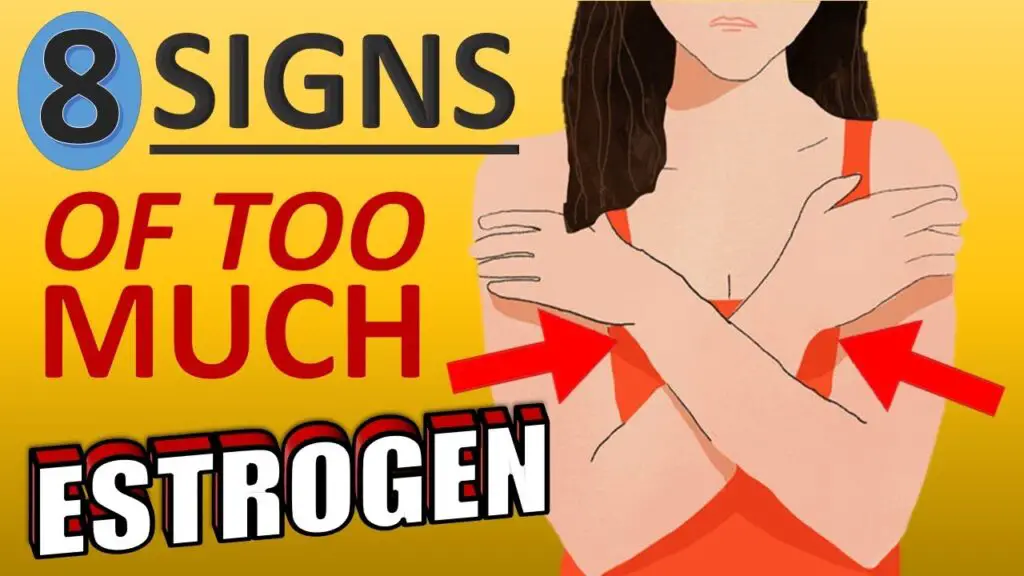If you struggle with weight gain, mood swings, infertility, or low libido, there’s a chance that you might have too much estrogen in your body. Having too much estrogen, otherwise referred to as estrogen dominance, can cause a range of symptoms, as well as putting you at risk of chronic diseases like autoimmune conditions, thyroid dysfunction, and cancer.
If it’s not properly in line with your other hormones, estrogen can wreak havoc on your body. Unfortunately, research has found that estrogen dominance is now more common than ever, in both women and men. The illnesses and diseases that come along with estrogen dominance are also dramatically increasing.
What causes estrogen dominance?
There are a number of factors responsible for the overproduction of estrogen in the body, but one of the key causes is exposure to chemicals called xenoestrogens. These chemicals behave almost identically to estrogen, so our bodies struggle to tell the difference between the two. You can find xenoestrogens almost everywhere – in foods and drinks, in personal care products, and even in our clothes.
Another huge cause of the rise in estrogen dominance is hormonal birth control. Doctors commonly prescribe this type of birth control to young women to regulate periods and control heavy bleeding, but the long-term effects of the pill are never properly explained.
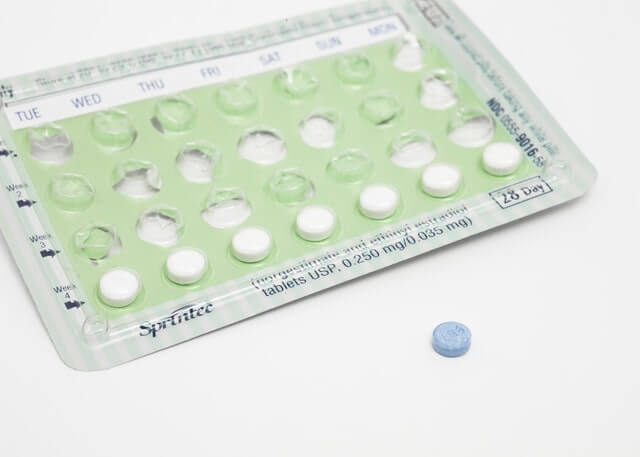
When taken over many years, the hormonal pill can cause a significant hormonal imbalance that doesn’t just add more estrogen into your body but also suppresses your natural progesterone levels. This hormone is essential for balancing the effects of estrogen, and without it, estrogen dominance is an almost inevitable outcome.
Luckily, there are plenty of things you can do to minimize your exposure to xenoestrogens and treat excessive estrogen levels in your body. Before we move onto treatment, though, we need to look at the common signs of estrogen dominance.Signs of too much estrogen
1. Low libido
This confuses many people, as low libido is also caused by a lack of estrogen. However, your libido is more to do with the balance of hormones in your body, and when one hormone is off whack, your desire for intimacy will plummet.
2. Irregular periods
Irregular periods are those that occur less than 24 days apart or more than 38 days apart. Again, too much and too little estrogen can cause your periods to be irregular, as well as a number of other factors, so you may need to visit your doctor to determine the cause.
3. Bloating
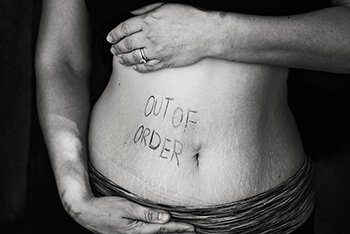
Increased estrogen levels can cause water retention, which can in turn cause bloating. It’s normal to experience bloating during certain phases of your menstrual cycle, but if bloating becomes a daily issue for you, it may be a sign of estrogen dominance.
4. Mood swings
If you’re experiencing sudden changes in mood, including irritability and depression, this may be down to too much estrogen, which causes mood disruptions that occur only in women. Too much estrogen has also been linked to anxiety symptoms.
5. Weight gain
Excessive levels of estrogen can lead to weight gain, especially around the hips and waist. Estrogen balance is essential for achieving and maintaining fat loss, so when your estrogen levels are off, your fat cells are more likely to work in overdrive.
6. Insomnia and sleeping difficulty

Estrogen stimulates the nervous system and interferes with the production of melatonin, which causes sleepiness when it’s dark. When melatonin production is off-balance, this not only affects sleep quality but the body's ability to regulate body temperature, blood pressure, and glucose levels.
7. Fatigue
Research has found that estrogen dominance may increase your chances of thyroid dysfunction, which can cause symptoms like fatigue. The lack of sleep as a result of unbalanced melatonin production may also leave you feeling tired and low in energy.
8. Enlarged breasts, sexual dysfunction, and infertility in men
Remember that estrogen dominance can affect men as well as women. The most common signs of the disorder for men to look out for are enlarged breasts, sexual dysfunction, and fertility problems. Men may also experience depression, fatigue, and sleep difficulty.
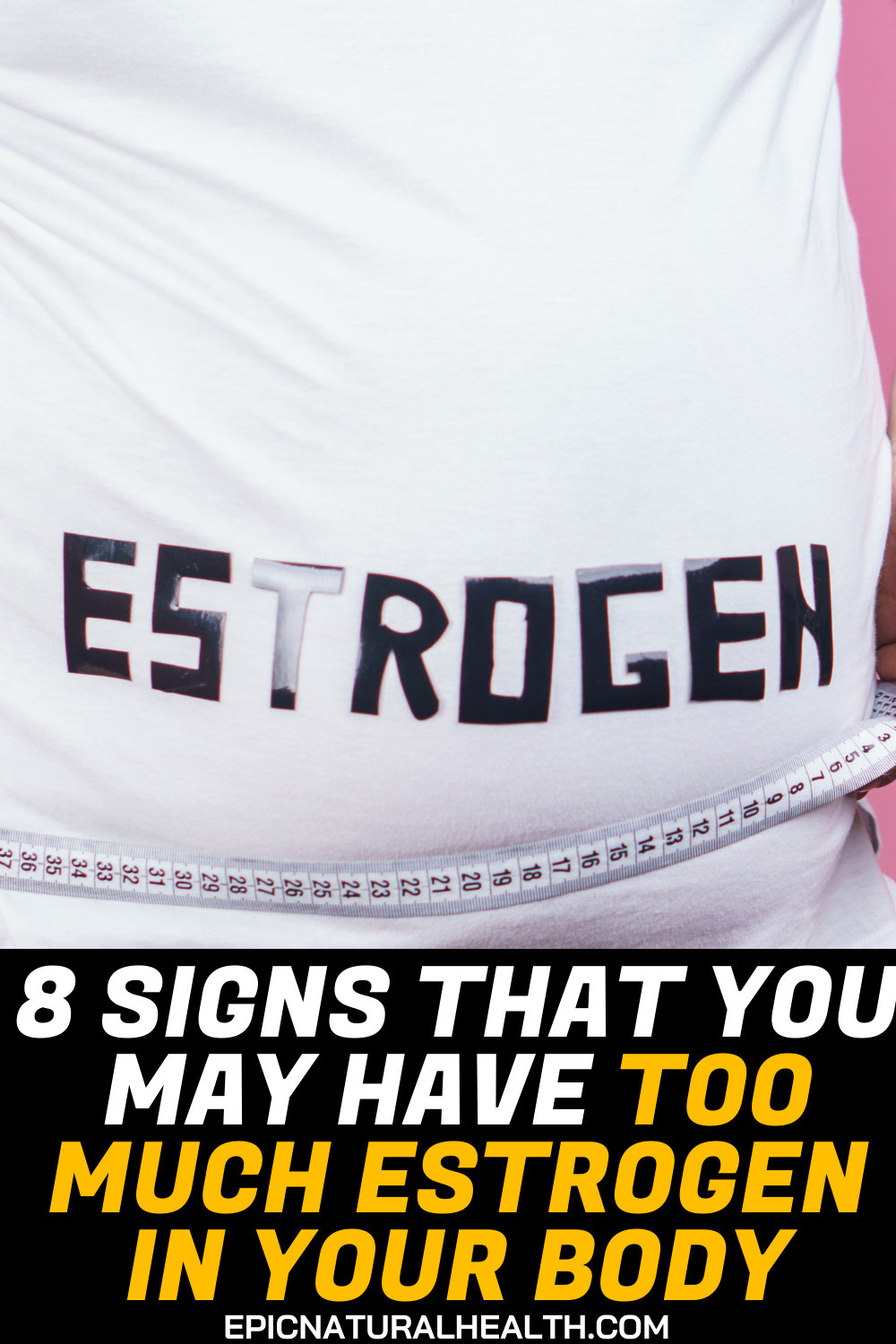
How to treat estrogen dominance
If you’re displaying a number of these high estrogen symptoms, you should think about speaking to your doctor and getting a medical diagnosis. Once you’re aware of the issue at hand, you’ll be able to treat it both conventionally and naturally using the methods covered in this video.
Here’s how to treat estrogen dominance and tackle the source of the issue:
1. Quit hormonal birth control

There are so many methods of birth control that don’t alter your hormones, so the first thing to do is speak to your doctor about a safer alternative. You might want to quit birth control altogether, which should generate a whole host of benefits, including improved mood, reduced bloating, and a faster metabolism. All of this is caused by the dramatic drop in estrogen that your body is so used to acquiring.
Examples of non-hormonal birth control methods include condoms, cervical caps, and diaphragms. You can use these whenever you want, and many of these methods are inexpensive. Unlike hormonal birth control methods, they have very little side effects.
2. Choose non-toxic personal care products
It’s all too tempting to go for the cheapest shampoo, cleanser, lotion, or spray without paying attention to its ingredients, but if you’re serious about going estrogen-free, you need to check that your personal care products are all non-toxic. You can find non-toxic versions of almost everything nowadays, so there’s no need to settle for a product that might be causing you harm.
It’s not always easy to tell when a product is really natural, even if it claims to be. The FDA doesn't review cosmetic or personal care ingredients for safety before they hit the shelves, so you’ll need to do the investigating yourself. Read product ingredient labels like you would food labels and learn which chemicals you should avoid.

3. Choose organic food
Yes, organic food is expensive, and there are limited options available, but this might change if more of us choose to go organic for our health. Pesticides and chemicals are common sources of xenoestrogens, so if you opt for food that hasn’t been produced in a clean, chemical-free environment, you risk damaging your body with excessive estrogen production.
If you can’t afford to go fully organic, focus in particular on switching up your red meats, fruits, and vegetables for organic alternatives. Not only will organic versions of these foods help you to regulate your hormones, but they also taste far nicer – and some studies have even found they’re more nutritional, too.
4. Avoid single-use water bottles

Both BPA and BPA-free relatives like BPS have the ability to act like estrogen in the body. BPA can cause an estrogen overload that can turn breast cells into cancerous ones. In fact, it’s often referred to as an environmental estrogen and is one of the most common synthetic chemicals that we can consume from plastic bottles, food packaging, and dental materials.
5. Lose weight
Just as excess estrogen is linked to weight gain and increased fat storage, losing weight can cause a significant decrease in your estrogen levels. The more fat you have, the more estrogen you’ll have, and it also works the other way around.
For example, estrogen overload can aggravate hypothyroid issues, slowing metabolism and causing resulting in a gain. If that estrogen overload comes from obesity in the first place, this can very quickly become a vicious cycle.
6. Cut down on estrogen rich foods
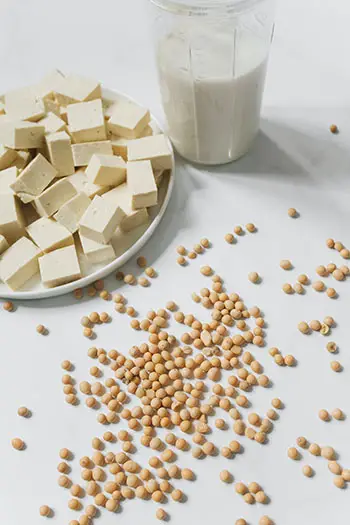
Some foods are a natural source of estrogen, and there’s no way to buy a “hormone-free” alternative. If you want to naturally reduce your estrogen levels, reassess your diet, and determine how many estrogen-rich foods you currently consume. If you include many foods on a daily basis in your breakfast, lunch, and dinner dishes, you might want to think about swapping them out for low-estrogen food sources.
7. Destress and relax

As stress and anxiety are linked to the overproduction of estrogen, working to tackle these issues will help to naturally reduce your estrogen levels. In today’s world, switching off and taking time to relax seems like an impossibility, but it’s essential for so many areas of our health. One study found that estrogen amplifies the stress response in areas of the brain, which means that not only does stress lead to an overproduction of estrogen, this excess estrogen causes stress – another vicious cycle to fall into.
8. Filter your drinking water
You might think that your home’s tap water is safe to drink – and for the most part, it is. However, while water treatment centres remove the majority of contaminants from water, there’ll still be traces of harmful chemicals and hormones in the water that comes out of your faucet that can contribute to estrogen dominance.
You can make your water safer by using an at-home water filter to remove the majority of these contaminants. Filters are usually installed at your kitchen faucet or at the water’s entry point into your home for whole-house use.
Conclusion
There is very little treatment a medical professional can offer you for estrogen dominance, unless they’re treating a condition that has caused your estrogen levels to rise, like polycystic ovary syndrome. This means that you’ll normally need to take treatment into your own hands to naturally reduce your estrogen levels. Click here if you wish to view No products found. which can also work quite well.
In some ways, being able to treat your estrogen dominance naturally is the far more beneficial solution, as it allows you to tailor a treatment plan to suit you. You’ll be able to choose the healthy foods that are right for you, find your favourite non-toxic products, and lose weight at your own pace. Putting a plan into action will not only treat your symptoms, but get rid of the problem at its core.

